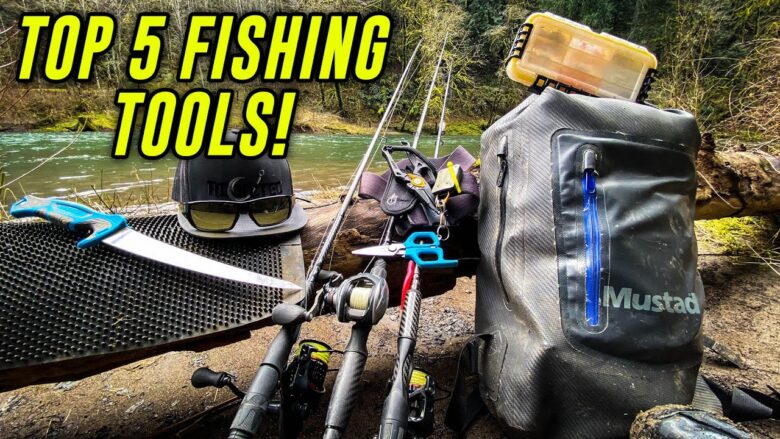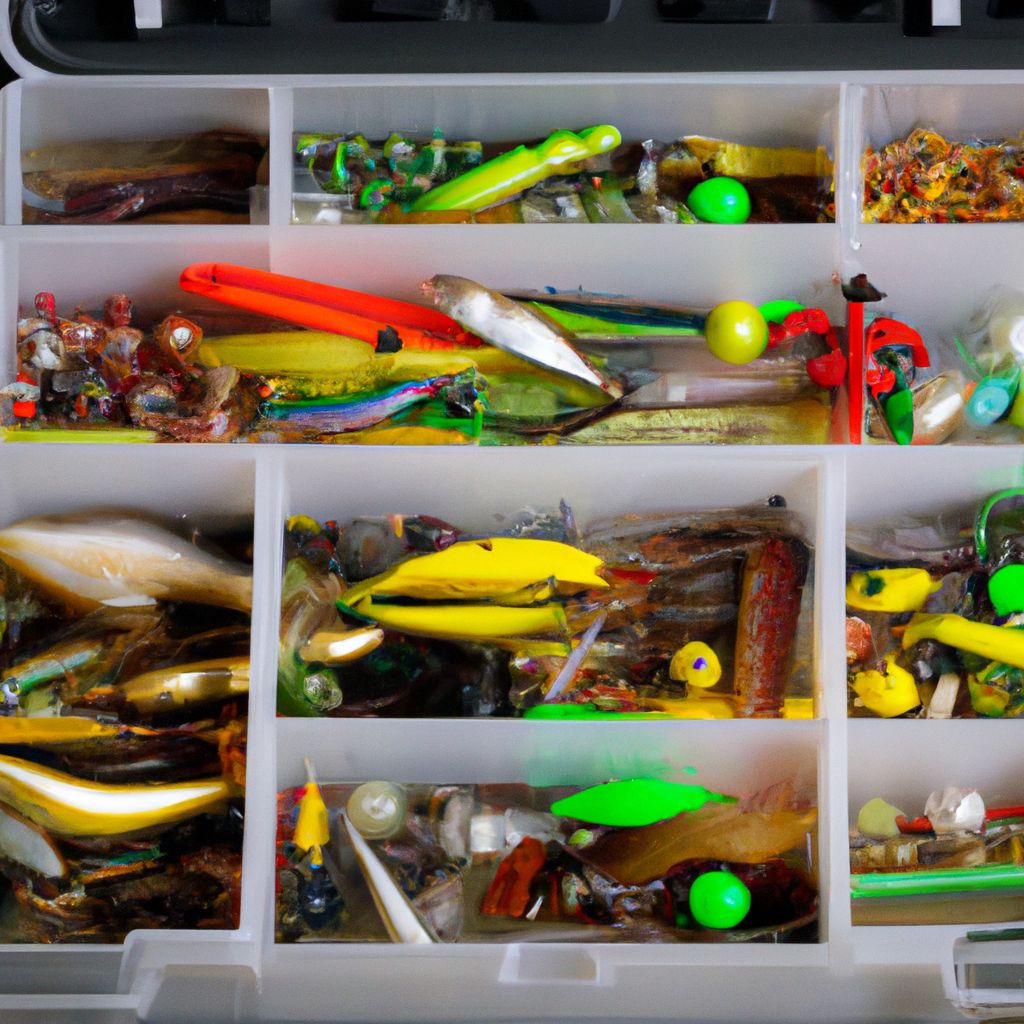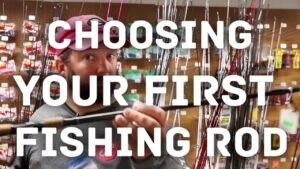Fishing equipment care is essential for success. Neglect can mean poor performance & costly repairs. So, look after your gear! This extends lifespan, boosts performance & enhances the fishing experience.
Clean gear after each use. Rinse with fresh water to remove salt, sand & debris. Pay attention to reels & rods, clear of any dirt or grime. Inspect lines for frays & weak spots, replacing if needed.
Proper storage is key. Store rods horizontally/vertically in a rack. Keep reels in cool, dry place. Free lines from tension to prevent stretching.
Maintain hooks & lures. Inspect hooks for rust/dullness & replace damaged ones – this increases your chances of catching fish. Clean lures to remove bait/scent.
Check for wear & tear. Tighten screws on reels, lubricate moving parts & replace worn-out components. This proactivity will reduce breakage during trips.
Pro Tip: Follow manufacturer’s instructions when cleaning/maintaining. Consider regular maintenance checks by professionals for optimal performance & longevity. Always refresh your Tinder bio – you never know when you’ll hook a big catch!
Understanding the Importance of Regular Maintenance
To ensure the longevity and performance of your fishing equipment, it is crucial to understand the importance of regular maintenance. In this section, we will explore how proper maintenance practices can help you maximize the lifespan and effectiveness of your gear. Sub-sections will discuss the key strategies for ensuring the longevity and performance of fishing equipment.
Ensuring Longevity and Performance of Fishing Equipment
Make your angling experience better with well-maintained fishing equipment! Here are essential tips to ensure its longevity and performance:
- Clean it after each trip: Remove saltwater, dirt and other debris to prevent damage and corrosion.
- Store it securely: Place in a dry spot away from extreme temperatures. Use covers or cases to prevent scratches and breakage.
- Inspect regularly: Look for signs of wear or damage on rods, reels and lines. Repair or replace worn-out parts.
- Lubricate moving parts: Apply lube to reel handles and bail springs to reduce friction and extend lifespan.
- Check the line: Look for frays or weak spots, and replace if needed.
- Maintain your rod: Inspect guides, handle grip and reel seat. Clean and tighten loose components.
For more maintenance tips, remember:
- Use protective cases.
- Follow manufacturer instructions.
- Schedule regular servicing.
- Replace worn-out parts.
- Stay educated.
Regular maintenance will maximize your gear’s lifespan, so invest in your passion and enjoy every fishing trip. Don’t forget – a clean reel catches more fish!
Proper Cleaning Techniques for Fishing Equipment
To ensure the longevity and optimal performance of your fishing equipment, proper cleaning techniques are essential. With this section focusing on cleaning rods, reels, and lines, you’ll discover effective methods to keep your gear in top-notch condition. So, let’s delve into the details of each sub-section and learn how to maintain your fishing equipment for years of successful angling.
Cleaning Rods, Reels, and Lines
- Cleaning fishing rods, reels, and lines is vital for their performance and durability. Here’s how to do it:
- Rinse your rod and reel with clean water after each use. This will remove any dirt, sand, and saltwater residue. Use gentle streams of water to prevent damage.
- Use a soft cloth or sponge with mild soap to clean the rod and reel. Scrub away tough stains without using abrasive cleaners or brushes.
- Wipe down fishing line with a damp cloth to remove dirt or debris. Don’t apply too much pressure or you’ll weaken the line.
- Specialized cleaning solutions for fishing gear can help remove tough stains and maintain your gear’s quality. Regularly cleaning your rods, reels, and lines can extend their lifespan and ensure optimal performance. So keep up with this maintenance for the best results on your next fishing adventure!
Storage Practices for Fishing Equipment
To ensure the proper care and maintenance of your fishing equipment, it is crucial to implement effective storage practices. This involves selecting the ideal storage location and utilizing the right techniques to preserve the longevity and functionality of your gear. Choosing the right storage location is the first step in protecting your fishing equipment.
Choosing the Right Storage Location
When picking the correct spot to store your fishing equipment, it’s super important! The right place can guarantee your gear stays in perfect condition and ready for your next fishing trip. Here are 3 points to think about:
- Shield from weather: When picking a spot to store fishing equipment, make sure it’s protected from the elements. Too much heat, moisture, and sunshine can damage your gear over time. Search for a spot with climate control or buy covers or cases.
- Accessibility: Another point to consider is accessibility. Pick a place where you can get your equipment whenever you need it. This could be an area in your garage, a shed in your yard, or even a special fishing gear storage cabinet.
- Security: Make sure your fishing equipment is secure. Look for a spot with security measures like locked doors/cabinets, cameras, or an alarm system. Plus, get tough locks and chains for extra security.
Also, look at details about your gear and your own preferences. Things like the size and type of gear, live bait that needs refrigeration, or any special requirements will affect the spot you choose.
My friend told me a story about his expensive rod he kept in his basement and it got ruined because he didn’t know there was a water leak. It reminds us how important it is to pick the right spot for our valuable fishing gear.
Maintaining Fishing Hooks and Lures
Want your hooks and lures to shine? Here’s a 4-step guide to keep your fishing gear in top condition!
- Clean them: Rinse with fresh water after each trip and use a soft cloth to dry them before storing.
- Check for damage: Look for any signs of rust or wear. Replace immediately for optimal performance.
- Store properly: Use tackle boxes or compartments to store separately and avoid tangling. Magnetic holders are great for easy access.
- Sharpen regularly: Use a hook file or sharpening stone to keep hooks sharp for successful catches.
For extra care, don’t expose to extreme temperatures or direct sun – this can damage your hooks and lures over time.
One angler shared a lesson about maintaining fishing gear. He was out fishing and kept breaking his line, even though he had new hooks and lures. He discovered a nick on the hook caused by improper maintenance. He learned the importance of taking care of his gear, which led to more successful fishing trips.
Investing in the upkeep of your hooks and lures will maximize durability and increase your chances of catching the big one! So before you start, inspect and repair your gear – a rusty hook won’t wow any fish, unless you’re going for the underwater gothic look.
Inspection and Repair of Fishing Equipment
To ensure the optimal performance of your fishing equipment, dive into the section “Inspection and Repair of Fishing Equipment.” Discover the solution to properly maintaining and addressing common issues with your gear. From identifying to fixing, this sub-section provides the necessary insights for keeping your fishing equipment in top shape.
Identifying and Fixing Common Issues
John knew the importance of identifying and fixing common issues when it comes to fishing gear. Prompt attention could ensure the longevity and effectiveness of the equipment.
- Check rods for cracks, dents or loose fittings.
- Inspect reels for rust or corrosion. Clean and lubricate moving parts.
- Examine fishing lines for fraying or weak spots. Replace if needed.
- Inspect hooks for bluntness or barb damage. Sharpen with a file.
- Check tackle box for worn-out latches and hinges. Repair or replace them.
- Inspect nets for holes or tears. Mend damage promptly.
Also, pay attention to less obvious issues such as loose connections. This includes ferrules on jointed rods or screws on reel handles.
John, an avid angler, had an experience to share. During a weekend fishing trip, he noticed a crack near the tip section of one of his fishing rods. To prevent catastrophic failure during casting, he patched the crack with adhesive tape from his tackle box.
This story is a reminder of how important it is to be proactive in maintaining and repairing fishing equipment. Handle your gear with care, unless you want to end up tangled in a net of irony!
Safety Precautions for Handling and Storing Fishing Equipment
To ensure the safety and longevity of your fishing equipment, it is crucial to take proper precautions while handling and storing it. In this section, we delve into the necessary steps to protect yourself and others during maintenance and storage. Discover the essential tips to keep everyone safe and your fishing gear in optimal condition.
Protecting Yourself and Others during Maintenance and Storage
Safety is key when handling and storing fishing gear. Here are some tips to keep in mind:
- Always wear protective gear like gloves and eye protection when handling fishing equipment. This helps avoid injuries from sharp hooks.
- Store fishing gear safely away from children and pets.
- Coil or spool the fishing lines to prevent tangling and tripping.
- Use storage containers or racks to organize the gear.
It’s important to maintain your fishing gear. Inspect for any signs of damage or wear and tear, especially on reels, rods, and lines. This can prevent accidents while fishing.
My friend Mark learnt this the hard way! He neglected to store his gear after a successful lake day. His dog got entangled in a loose line. Fortunately, no harm was done. But it made us realise how important it is to be careful with handling and storage.
By following these precautions, you’ll have a safe and enjoyable fishing experience. Plus, your gear will last longer – and fewer excuses for not catching any fish!
Conclusion: Maximizing the Lifespan of Fishing Equipment
Maxing out the lifespan of fishing equipment is a must for every angler! To keep your gear functioning, follow these 3 top tips:
- Clean and maintain after each use, to avoid corrosion and rust.
- Check for any signs of wear and tear, like frayed lines or broken rods.
- Store your fishing gear in a dry and tidy space, to prevent damage.
Plus, don’t forget the small stuff! Clean off saltwater residue, oil moving parts, and replace worn-out components quickly.
Pro Tip: Register for product warranties and use manufacturer repair services when needed. It’ll save you cash and help keep your fishing gear working!





